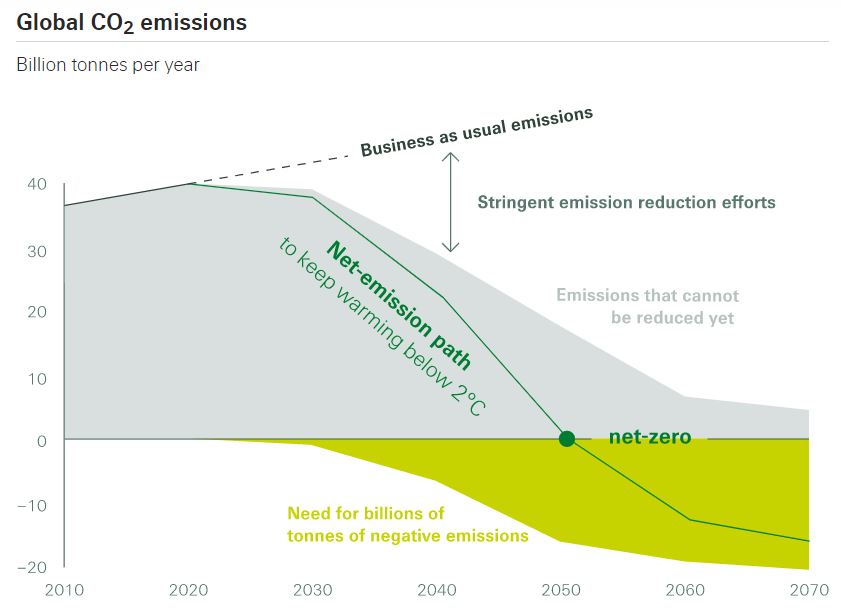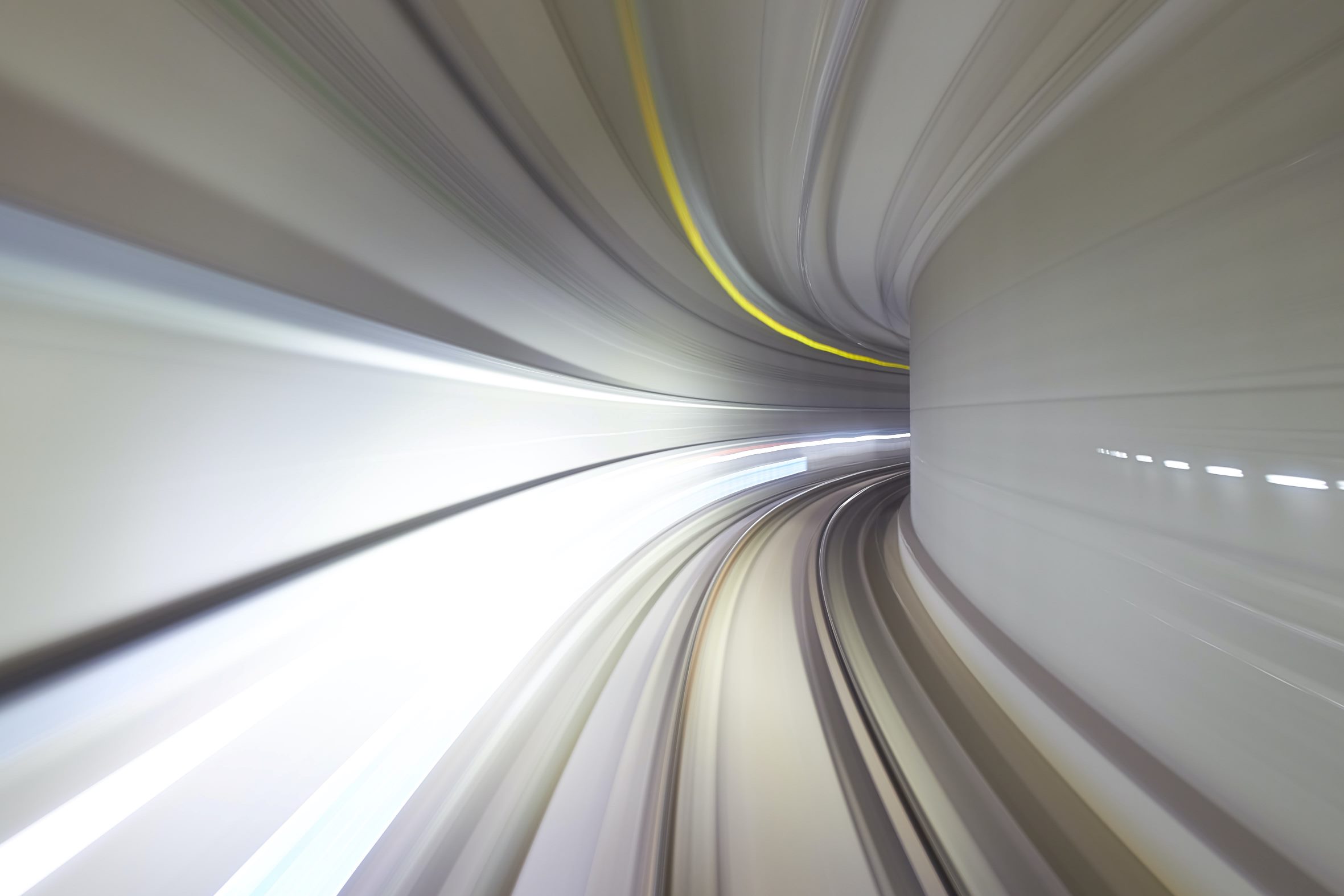The common goal is to limit global warming to “well below” 2 degrees Celsius and, preferably to 1.5 degrees Celsius compared to pre-industrial levels, as set out in the Paris Agreement, adopted in 2015 by 196 Parties, and reaffirmed in the 2021 Glasgow Climate Pact.
For this to be possible, countries must keep anthropogenic emissions below a given threshold, thus limiting the exposure of natural and human systems to climate-related risks. However, as stated in Article 3 of the Glasgow Climate Pact, “carbon budgets consistent with achieving the Paris Agreement temperature goal are now small and being rapidly depleted”: the goal is challenging, and the defined threshold is just around the corner.
What is the Carbon Budget
As global emissions rise, planetary warming is getting worse.
According to the latest report by the Intergovernmental Panel on Climate Change (IPCC), released in 2021, average global surface temperature has already grown by 1.1 degrees Celsius compared to the preindustrial era, and it could reach a warming of up to 5.7 degrees in worst case scenarios. For this to be averted, emissions must slow down rapidly and reach net zero as soon as possible. However, this cannot happen overnight and therefore the speed at which we will reach net zero is determined by the goals set in place by policymakers and based on the scientific evidence emerging from the most recent reports of the IPCC.
To this end, the carbon budget indicates the cumulative amount of carbon dioxide (CO2) that we can still emit to keep warming below specific limits. The carbon budget relates cumulative emissions of CO2 – the primary greenhouse gas emitted through human activities – to global mean temperature increase. By reducing global annual CO2 emissions to net zero, cumulative CO2 emissions are kept within a budget.
The concept of carbon budget is clearly defined by the IPCC, which makes a distinction between total carbon budget, the carbon budget that humanity had at disposal starting from the pre-industrial period, and the remaining carbon budget, the budget that we still have at our disposal to date.
The term ‘carbon budget’ refers to the maximum amount of cumulative net global anthropogenic CO2 emissions that would result in limiting global warming to a given level with a given probability, taking into account the effect of other anthropogenic climate forcers. This is referred to as the total carbon budget when expressed starting from the pre-industrial period, and as the remaining carbon budget when expressed from a recent specified date (Glossary). Historical cumulative CO2 emissions determine to a large degree warming to date, while future emissions cause future additional warming. The remaining carbon budget indicates how much CO2 could still be emitted while keeping warming below a specific temperature level.
“The carbon budget is a useful policy tool that allows policymakers and other actors to visualize the remaining cumulative CO2 emissions for a specific period to be in line with the Paris Agreement targets,” affirms Laurent Drouet, a scientist at the RFF-CMCC – European Institute on Economics and the Environment (EIEE). “This offers an effective and useful approach for the world of policy through simplification. It considers only total CO2, and we know how to abate CO2 emissions – which, nevertheless, are not the only greenhouse gas. Moreover, calculations on the carbon budget are reliable: it is a tool upon which there is wide scientific consensus.”
Tick tock. The clock keeps ticking
“The concept of the carbon budget is based on a nearly linear relationship between the cumulative emissions and the temperature rise,” explains Brigitte Knopf, Secretary General at the Mercator Research Institute on Global Commons and Climate Change (MCC). To effectively represent the carbon budget concept, the Berlin-based research institute realized the “carbon clock”: a countdown timer that shows how much CO2 can still be released into the atmosphere to limit global warming to a maximum of 1.5°C and 2°C and how much time is left in each scenario.
The IPCC gives a complete overview of the remaining carbon budget estimates for different temperature limits (1.5⁰C, 1.7⁰C, 2⁰C of warming relative to 1850–1900) and different probability levels (17% ,33%, 50%, 67%, 83% likelihood of limiting global warming to the considered temperature limit). According to the choices made, the remaining carbon budget will change from a minimum of 83 GtCO2 (gigatonnes of CO2) for an 83% probability of keeping the warming below 1.5⁰C, to a maximum of 2,300 GtCO2 for a 17% probability of keeping the warming below 2⁰C.
Carbon budgets tell us how much CO2 we can still emit while keeping warming below specific limits.
The latest @IPCC_CH report provides updated estimates of these budgets.
Here’s an insider’s view with a deep dive looking at how they have changed since previous reports. (1/n) pic.twitter.com/7G7Era6uVa
— Joeri Rogelj (@JoeriRogelj) August 9, 2021
Based on this data, the MCC Clock shows that for a two-thirds chance of reaching the goal of limiting warming to 1.5°C, the world could emit only about 400 GtCO2 from the beginning of 2020. Maintaining current levels of emissions would mean using up all our budget in less than 8 years from now. Game over. Instead, the budget for a two-thirds likelihood of limiting global warming to 2°C would be exhausted in about 25 years.
“The clock keeps ticking and shows how little time is left for political decision-makers to take action,” specifies Knopf, “Nevertheless, this does not mean that the earth would necessarily be 1.5⁰C warmer at the very point in time when the remaining carbon budget for staying below the 1.5⁰C threshold is used up. This is due to, among others, the fact that there is a time lag between the concentration of emissions in the atmosphere and the impact thereof on the temperature.”
The Carbon Tracker Initiative has created a helpful video that visualizes how the size of the carbon budget will change considering different time frames, GHG emitting sectors (e.g. energy, land-use and forestry), and greenhouse gases (only CO2 or including other climate altering gasses, such as methane and nitrous oxides). Moreover, the video shows that such calculations could be used by the policy sphere to allocate a share of emissions to each fossil fuel.
What if we overshoot the carbon budget?
Emissions should reach the zero mark before the budget is over, which is an enormous challenge for our societies and economies.
Both in games and in real life, when your budget runs out you can usually ask for a loan. In the case of a carbon budget overshoot, the “net zero” approach comes to the rescue. The Glasgow Climate Pact recognizes that limiting global warming to 1.5°C requires reaching net zero CO2 emissions around mid-century. Net zero means that anthropogenic emissions put into the atmosphere must be balanced globally by the same amount of removals, making the net emissions equal to zero and reaching a carbon neutrality.
Therefore, global emissions may not be zeroed by 2050, but carbon dioxide removal technologies could be used to extend the carbon budget, compensating the emissions in excess. This allows for a little flexibility when overshooting the remaining carbon budget.
Such solutions include natural processes such as afforestation and reforestation, which enhance natural CO2 ‘sinks’, and technological solutions such as direct air carbon capture and storage (DACCS) or bioenergy with carbon capture and storage (BECCS). These technologies have different levels of development, with some of them still in a demonstration phase, and there is still uncertainty about their availability and costs.
Source: Swiss Re, based on a graph published by the IPCC
Current pledges set out by Parties to the Paris Agreement – even if fully achieved – are not sufficient to stay within the budget that limits temperature rise to 1.5°C, according to a flagship report of the International Energy Agency. If global temperature temporarily overshoots 1.5°C, explains the IPCC, the amount of CO2 drawn out of the atmosphere thanks to carbon removal technologies would need to be greater than the amount of emissions entering the atmosphere, resulting in “net negative emissions”. This would reduce the atmospheric concentration of CO2 and help lower global temperatures. Nevertheless, heavy reliance on negative emissions is problematic because of the high uncertainty surrounding such technologies on a large scale.
From targets to action
Carbon budget calculations successfully illustrate the urgency of action and clarify the magnitude of the efforts needed to meet the Paris goals. However, the overarching goal must necessarily be translated into practice at various levels to become operational. How do these targets apply in the real world, from the public to the private sectors?
“The carbon budget is a global tool. But when you talk about net-zero emissions you talk about national policies,” comments Laurent Drouet.
Under the Paris Agreement, countries self-determine their emission reduction targets through the bottom-up approach of the Nationally Determined Contributions (NDCs). Translating the global goals into coherent NDCs is challenging in the context of international climate negotiations.
“This challenge involves questions of equity and fairness,” affirms Marinella Davide, researcher at the CMCC Foundation and Ca’Foscari University and expert on climate policies. “There are two important dimensions to consider: the first is about timing, the second is about financing.
In the context of the UNFCCC, some countries are given more time to get to net zero. We cannot expect all countries to achieve a net zero goal at the same time, because the speed of making a low carbon transition depends on the capacity of a country to address the climate challenge, which is strictly linked to its level of development and wealth. Moreover, there is an issue of historical responsibility: countries that have used most of the carbon budget so far, namley developed countries, are requested by the Paris Agreement to reduce emissions at a faster rate and at the same time “take the lead”.
The second dimension concerns financing and support. Developed countries are asked to help developing countries accelerate their transition toward low-carbon economies both through capacity-building and financial aid. In addition, Art. 6 of the Paris Agreement identifies cooperation mechanisms to reduce the overall costs of this transition and support developing countries. Finance but also knowledge and technological transfers may allow low-income countries to leapfrog their development, bypassing the dirty stages of economic growth and jumping directly to the adoption of cleaner technologies for a low carbon economic development”.
The private sector: Science Based-Targets
“At the private sector level, the most authoritative attempt so far to translate the concept of carbon budget into goals for individual companies is the Science Based-Targets initiative,” explains Andrea Maggiani, Founder and Managing Director at Carbonsink.
The Science Based-Targets initiative is a collaboration between the Carbon Disclosure Project (CDP), World Resources Institute (WRI), the Worldwide Fund for Nature (WWF), and the United Nations Global Compact (UNGC). Over 1,200 companies worldwide have committed to date to cut their carbon footprints through such initiatives, which is a gold standard for defining the pathway to reduce corporate emissions.
“Science-based emission reduction targets are those aligned with what the latest climate science says is necessary to meet the goals of the Paris Agreement” continues Maggiani. “In a nutshell, the Science Based-Targets initiative framework starts from the carbon budget available and arrives at emission reduction trajectories required for different sectors according to climatic scenarios. Then, the company-level targets are defined according to the allocation approach, mostly the Absolute Contraction Approach, or the Sectoral Decarbonization Approach.”
The Absolute Contraction Approach, reads the Initiative, is the approach for the vast majority of companies to set emissions reduction targets that are aligned with the global, annual emissions reduction rate that is required to meet 1.5˚C or well-below 2˚C. The Sectoral Decarbonization Approach is an alternative method that allows carbon-intensity metrics and targets to be derived from global mitigation pathways for some of the most carbon-intensive activities, such as road transportation, aviation, the generation of electricity or the production of basic materials. It aims to provide businesses with a sector specific and research-backed methods to set their emissions goals, taking sectoral differences and abatement potentials into account.
In October, we launched the world’s first #NetZeroStandard. 🙌
Companies will need to set near- and long-term #ScienceBasedTargets – but what does this really mean, and how do these terms relate to regular science-based targets?
Read on in our new blog: https://t.co/cCROviMnjZ
— Science Based Targets (@sciencetargets) November 29, 2021
“There is an increasing drive for companies to take action on climate change and set ambitious targets, also under the pressure of consumers and investors,” adds Maggiani. “Since there are sectors for which the Science Based-Targets initiative framework is still under development, it is possible that companies independently develop a methodology to set their science-based targets, which are going to be evaluated by investors and stakeholders on a case-by-case basis. As science and contexts evolve, the Science Based-Targets initiative constantly reviews the framework, with the primary goal of expanding the range of covered sectors and making it more applicable. It’s a dynamic process.”







